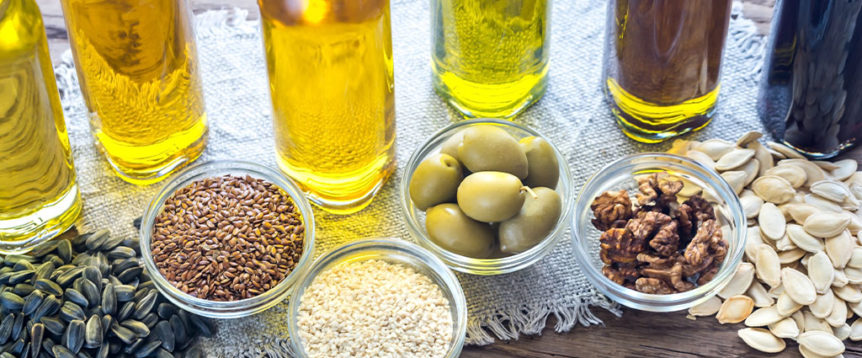You might stock your kitchen with a variety of oils to use in marinades and salad dressings, for sautéing and searing, even for baking. While flavor and nutritional value play a role in choosing the right oil, so does cooking technique. What is the best oil to cook with? We reached out to celebrity nutritionist Haylie Pomroy, author of The Fast Metabolism Diet (Harmony, 2012), who offered these recommendations.
Avocado Oil
Smoke Point: 520º
Rich in monounsaturated fat, avocado oil has a high smoke point, which means it’s perfect for cooking at a much higher heat.
“It’s ideal for searing meats or fish or for grilling over a high flame,” Pomroy says. “It can make any dressing have a creamy feel. And, when baking, it makes the product stretchier and moister.”
Try: Primal Kitchen Avocado Oil
Coconut Oil
Smoke Point: 350º
Solid at room temperature, coconut oil is ideal for baking but not for salad dressing. “I use coconut oil for making chocolates or cacao-dipped strawberries or almonds,” Pomroy says, noting how it solidifies nicely in the fridge. It’s also good for moderate-heat roasting, giving off a tropical scent when heated.
Canola Oil
Smoke Point: 400º
Pressed from rapeseed, canola oil contains healthy omega-3 fatty acids. It boasts a neutral flavor and has a high smoke point, making it a good choice for high-heat cooking. Pomroy notes that the vast majority of canola plants have been genetically modified, so she avoids using this oil for that reason.
Grapeseed Oil
Smoke Point: 420º
With its clean taste and high smoke point, grapeseed oil is an all-around great choice. “I use it when cooking at high heat, like when searing a roast before putting it in the slow cooker or pan-frying veggies,” notes Pomroy. It also allows other flavors (like herbs) to shine, making it a good fit for salad dressings.
Sesame Oil
Smoke Point: 410º
With a distinct flavor (especially toasted sesame oil), this oil should be a pantry staple, especially for roasting and sautéing. “Use sesame oil for stir-fries to give them a kick, or drizzle it over buckwheat noodles,” Pomroy suggests.
Safflower Oil
Smoke Point: 450º
A mild flavor renders safflower oil a good choice anytime you don’t want an additional flavor, whether that’s in cooking or when making a salad dressing. Pomroy points out that safflower oil can also help regulate blood glucose levels.
Olive Oil
Smoke Point: varies from 325 – 400º
Lighter in flavor (but not calories), light olive oil has a higher smoke point of 470°, which makes it great for high-heat cooking. However, extra-virgin olive oil (EVOO) delivers a more robust flavor and lower smoke point (325°), so it’s better suited for vinaigrettes.
Sunflower Oil
Smoke Point: 450º
Pomroy notes that sunflower oil is low in saturated fat and high in good-for-you unsaturated fat. “It’s another neutral-flavored oil that’s suitable for cooking and for greasing baking pans,” she says.
What is a smoke point?
Each oil has a smoke point, the temperature at which it stops shimmering and starts to smoke. At this point, the fat starts to break down, releasing a substance called acrolein that can give food an acrid taste. It also oxidizes, creating harmful free radicals.

